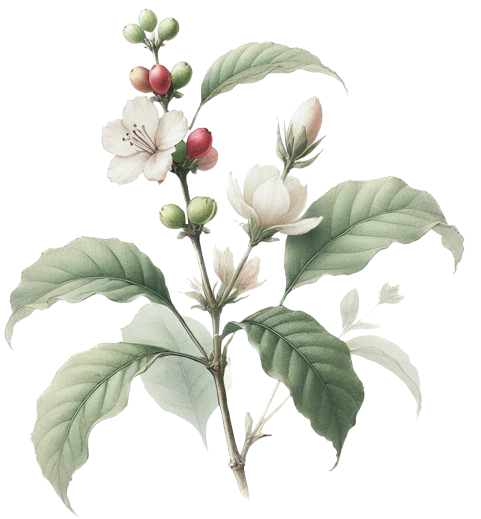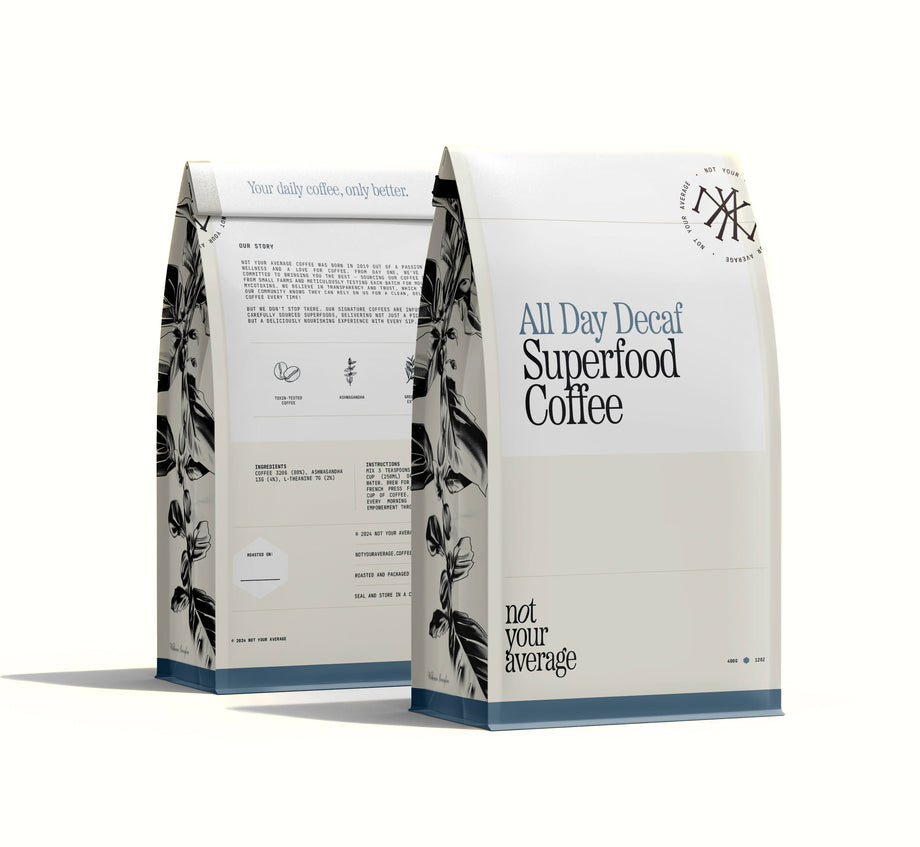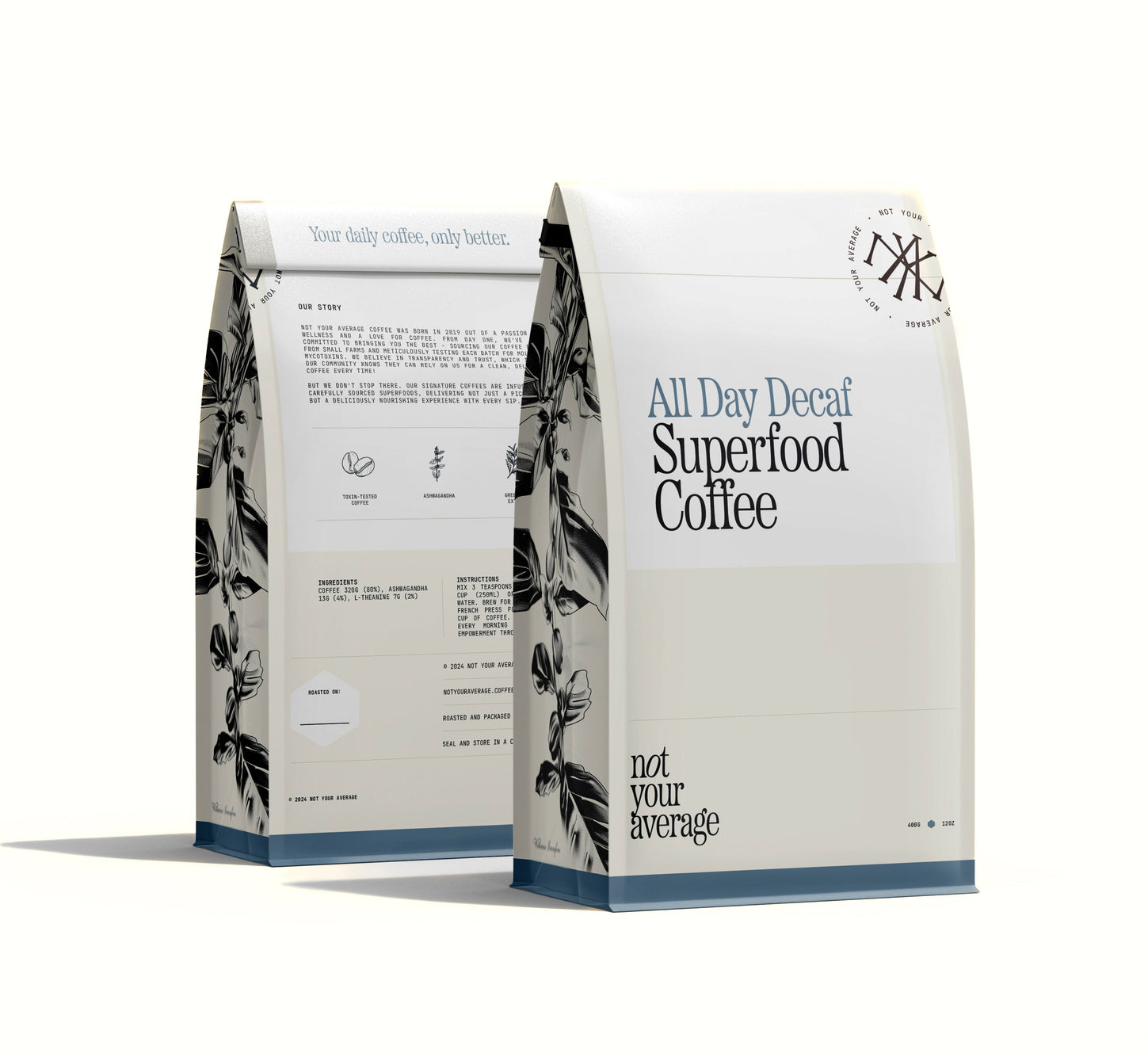
coffee
(coffea arabica)
Botanical Profile and Habitat
Coffea, the genus of flowering plants whose seeds are known as coffee beans, comprises over 120 species. The most notable are Coffea arabica (Arabica coffee) and Coffea canephora (Robusta coffee). These evergreen shrubs grow best in well-drained, volcanic soils at elevations between 600 to 2,000 meters. They require consistent rainfall and mild temperatures, making regions like Central and South America ideal for cultivation.
Coffee has a rich history dating back to the 15th century when it was first consumed in Yemen. From there, its popularity spread to the Middle East, Europe, and eventually the rest of the world. Coffeehouses became cultural hubs for intellectual exchange and social gatherings. Today, coffee is one of the most widely consumed beverages globally, deeply ingrained in various cultures.
Health Benefits
Coffee offers numerous health benefits, supported by extensive research:
Improved Mental Alertness: Caffeine, a natural stimulant found in coffee, enhances mental alertness and concentration. It works by blocking adenosine, a neurotransmitter that promotes sleep, thus reducing fatigue.
Antioxidant Properties: Coffee is rich in antioxidants like chlorogenic acid, which help combat oxidative stress and inflammation, reducing the risk of chronic diseases.
Reduced Risk of Certain Diseases: Regular coffee consumption has been linked to a lower risk of conditions such as Parkinson’s disease, Alzheimer’s disease, and type 2 diabetes due to the neuroprotective effects of caffeine and other bioactive compounds.
Enhanced Physical Performance: Caffeine increases adrenaline levels, which can improve physical performance by mobilizing fatty acids from fat tissues, making it a popular pre-exercise beverage.
Coffee has become a global staple, celebrated for its stimulating effects and numerous health benefits. From enhancing mental alertness and physical performance to offering protective effects against certain diseases, coffee remains a significant part of daily life and culture worldwide.
coffee
Botanical Profile and Habitat
Coffea, the genus of flowering plants whose seeds are known as coffee beans, comprises over 120 species. The most notable are Coffea arabica (Arabica coffee) and Coffea canephora (Robusta coffee). These evergreen shrubs grow best in well-drained, volcanic soils at elevations between 600 to 2,000 meters. They require consistent rainfall and mild temperatures, making regions like Central and South America ideal for cultivation.

Coffee has a rich history dating back to the 15th century when it was first consumed in Yemen. From there, its popularity spread to the Middle East, Europe, and eventually the rest of the world. Coffeehouses became cultural hubs for intellectual exchange and social gatherings. Today, coffee is one of the most widely consumed beverages globally, deeply ingrained in various cultures.
Health Benefits
Coffee offers numerous health benefits, supported by extensive research:
Improved Mental Alertness: Caffeine, a natural stimulant found in coffee, enhances mental alertness and concentration. It works by blocking adenosine, a neurotransmitter that promotes sleep, thus reducing fatigue.
Antioxidant Properties: Coffee is rich in antioxidants like chlorogenic acid, which help combat oxidative stress and inflammation, reducing the risk of chronic diseases.
Reduced Risk of Certain Diseases: Regular coffee consumption has been linked to a lower risk of conditions such as Parkinson’s disease, Alzheimer’s disease, and type 2 diabetes due to the neuroprotective effects of caffeine and other bioactive compounds.
Enhanced Physical Performance: Caffeine increases adrenaline levels, which can improve physical performance by mobilizing fatty acids from fat tissues, making it a popular pre-exercise beverage.
Coffee has become a global staple, celebrated for its stimulating effects and numerous health benefits. From enhancing mental alertness and physical performance to offering protective effects against certain diseases, coffee remains a significant part of daily life and culture worldwide.






